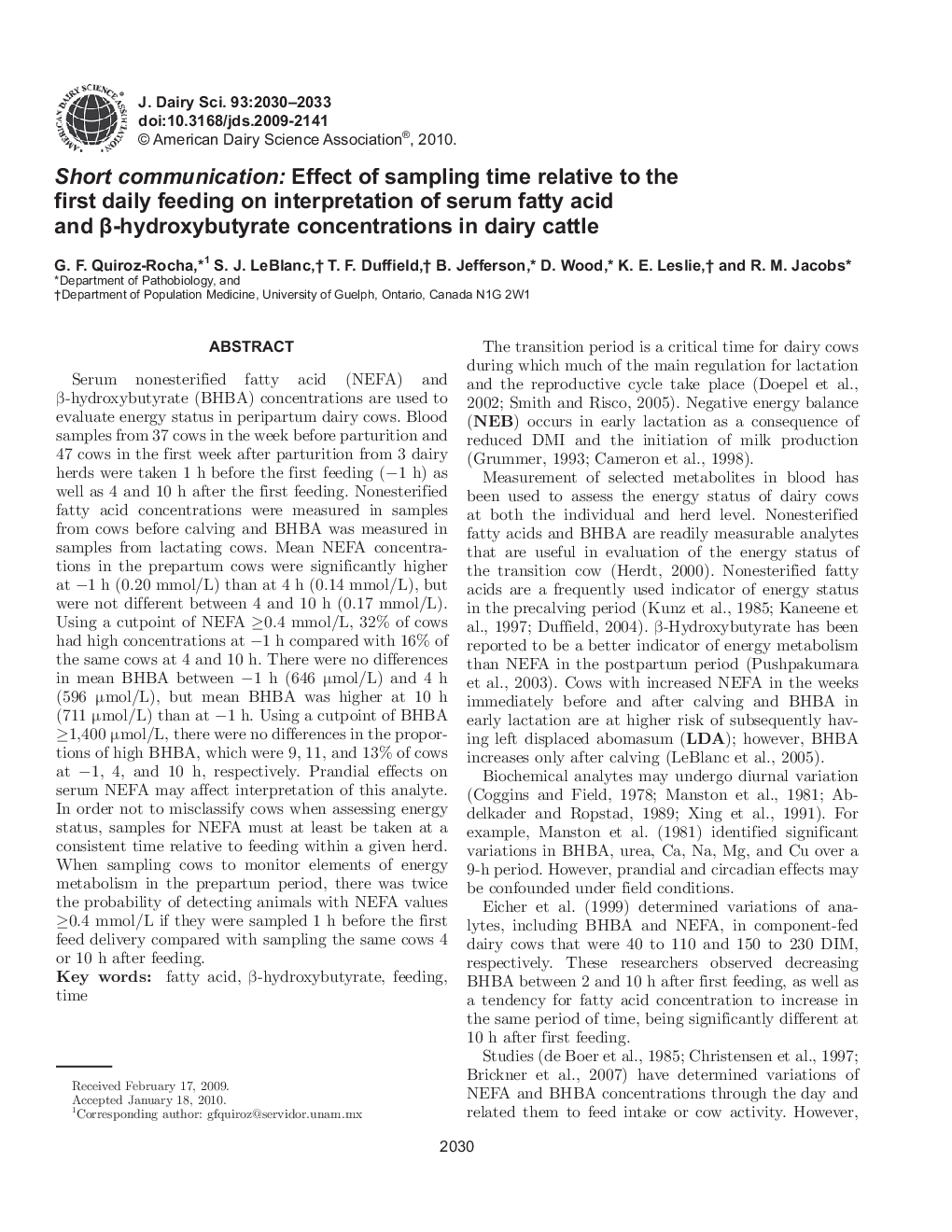| Article ID | Journal | Published Year | Pages | File Type |
|---|---|---|---|---|
| 5789723 | Journal of Dairy Science | 2010 | 4 Pages |
Abstract
Serum nonesterified fatty acid (NEFA) and β-hydroxybutyrate (BHBA) concentrations are used to evaluate energy status in peripartum dairy cows. Blood samples from 37 cows in the week before parturition and 47 cows in the first week after parturition from 3 dairy herds were taken 1 h before the first feeding (â1 h) as well as 4 and 10 h after the first feeding. Nonesterified fatty acid concentrations were measured in samples from cows before calving and BHBA was measured in samples from lactating cows. Mean NEFA concentrations in the prepartum cows were significantly higher at â1 h (0.20 mmol/L) than at 4 h (0.14 mmol/L), but were not different between 4 and 10 h (0.17 mmol/L). Using a cutpoint of NEFA â¥0.4 mmol/L, 32% of cows had high concentrations at â1 h compared with 16% of the same cows at 4 and 10 h. There were no differences in mean BHBA between â1 h (646 μmol/L) and 4 h (596 μmol/L), but mean BHBA was higher at 10 h (711 μmol/L) than at â1 h. Using a cutpoint of BHBA â¥1,400 μmol/L, there were no differences in the proportions of high BHBA, which were 9, 11, and 13% of cows at â1, 4, and 10 h, respectively. Prandial effects on serum NEFA may affect interpretation of this analyte. In order not to misclassify cows when assessing energy status, samples for NEFA must at least be taken at a consistent time relative to feeding within a given herd. When sampling cows to monitor elements of energy metabolism in the prepartum period, there was twice the probability of detecting animals with NEFA values â¥0.4 mmol/L if they were sampled 1 h before the first feed delivery compared with sampling the same cows 4 or 10 h after feeding.
Related Topics
Life Sciences
Agricultural and Biological Sciences
Animal Science and Zoology
Authors
G.F. Quiroz-Rocha, S.J. LeBlanc, T.F. Duffield, B. Jefferson, D. Wood, K.E. Leslie, R.M. Jacobs,
